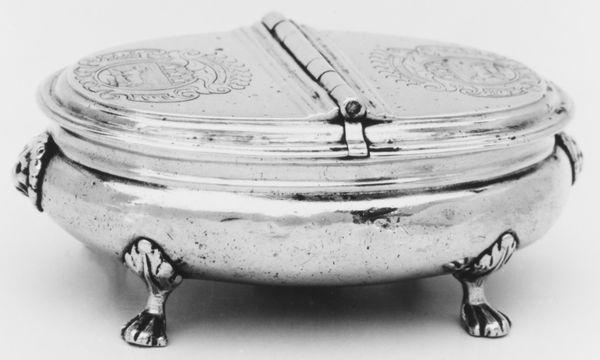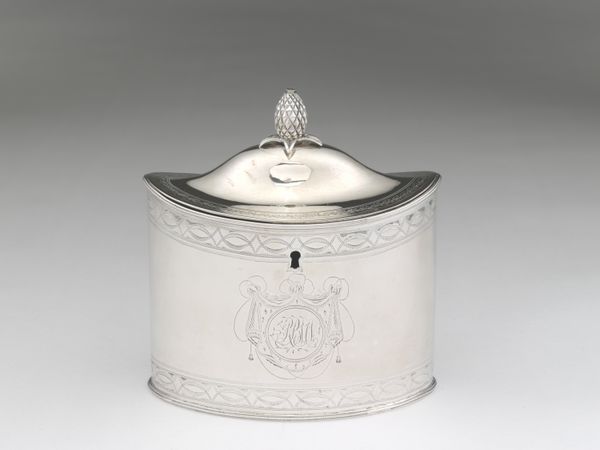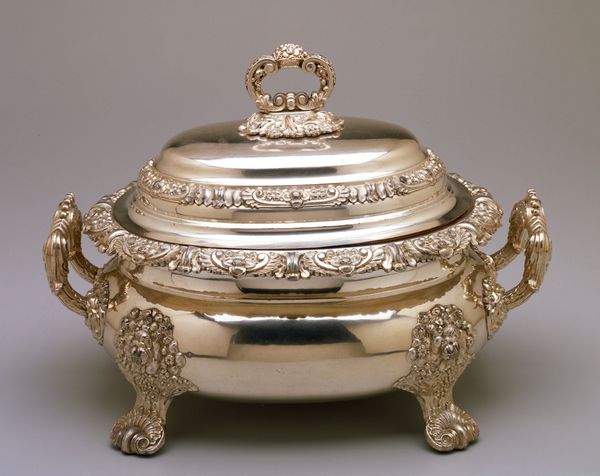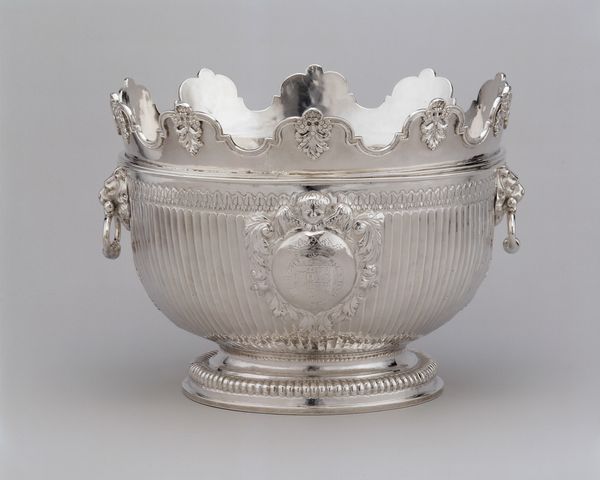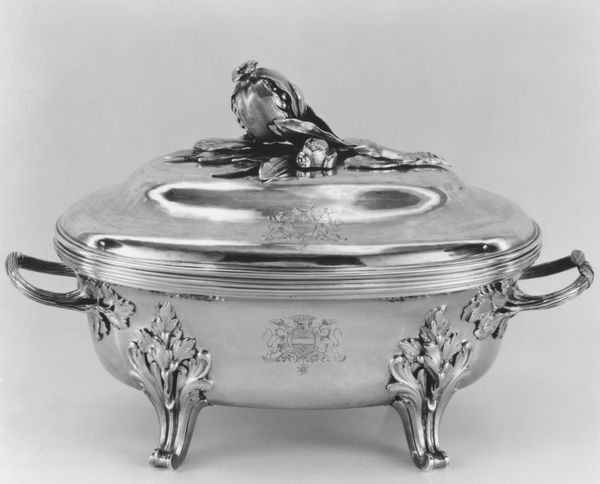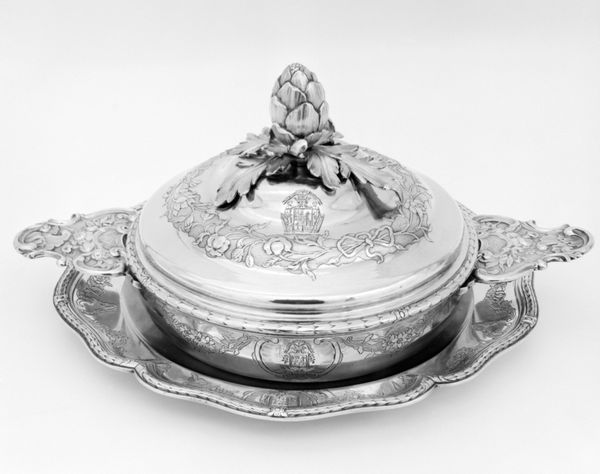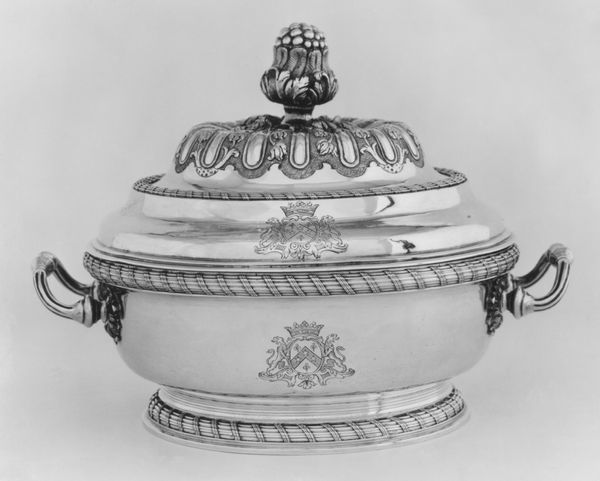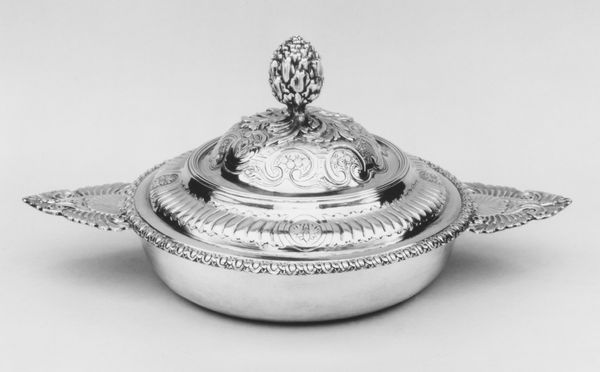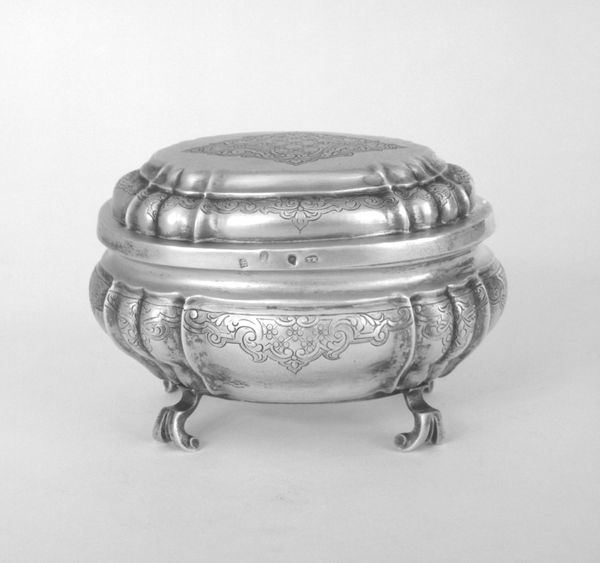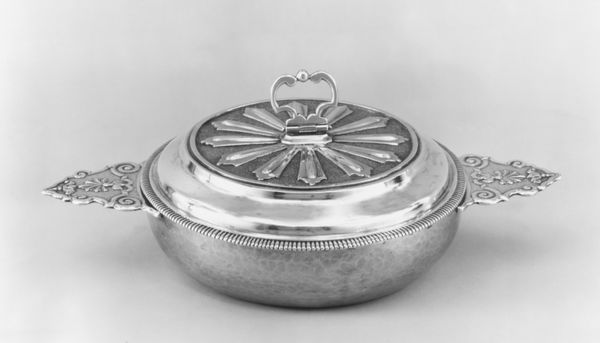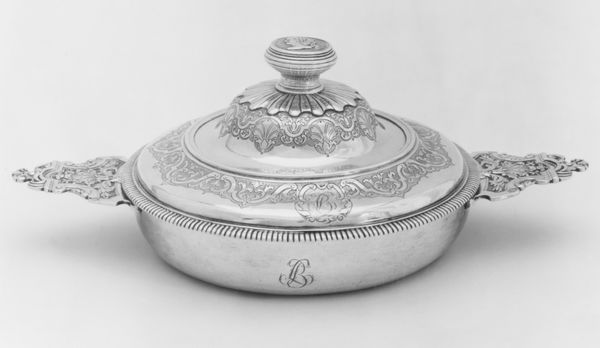
silver, metal, sculpture
#
silver
#
metal
#
bird
#
sculpture
#
decorative-art
Dimensions: 5 1/2 x 4 1/4 x 7 1/2 in. (14.0 x 10.8 x 19.1 cm)
Copyright: Public Domain
Curator: I’m immediately struck by its gleaming surface. It seems almost austere in its simplicity. Editor: These are a Pair of Vegetable Dishes, crafted from silver by William Simons around 1803 or 1804. They're currently housed at the Metropolitan Museum of Art. What do you make of them from your perspective? Curator: Well, first I look at the materiality—the smooth, reflective silver, meticulously shaped. Consider the labour involved in hammering, smoothing, and polishing this metal into such a precise form. And it sits so elegantly on those rounded feet! Editor: Indeed, that emphasis on silver speaks to its socio-economic context. These dishes were undoubtedly commissioned, a statement of wealth and status during a time of immense social stratification. That coat-of-arms must tell its own story, with the birds almost in conversation on either side of the crest. Who used these, and at whose expense? Curator: Exactly. How does its craftsmanship embody the tastes and values of its era? It isn’t simply a container; it is performative, declaring much more. The design, featuring the family crest flanked by birds and the lion-head handles, evokes a particular aesthetic, reflective of societal hierarchies and power dynamics. It’s not just about presenting vegetables; it's about presenting an image. Editor: The symmetry appeals to my senses and I cannot dismiss the simple visual beauty. This object clearly bridges both aesthetic expression and class division, even centuries on from its inception. It prompts a broader inquiry into the societal forces that enable the creation and consumption of such artifacts, while also making them into symbols. Curator: Precisely. Its function becomes secondary to its symbolic value. Examining how the raw material has been manipulated exposes labor relationships. The consumption habits of that time reveal the complex power structures and consumerist urges that even then are shaping the human experience. Editor: Looking closely, this seemingly straightforward decorative object invites conversations around identity, labor, and legacy. Thanks for your illuminating views. Curator: And thank you—a productive consideration of material and historical power structures, made visually accessible!
Comments
No comments
Be the first to comment and join the conversation on the ultimate creative platform.


